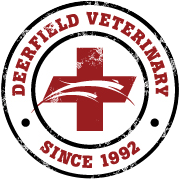Library
-
Secondhand smoke is not just detrimental to people but also our pets. Pets may be even more sensitive, due to their enhanced smell and different anatomy and physiology. Cancer risks are significantly higher in pets exposed to secondhand smoke.
-
Dental X-rays in dogs are similar to those taken in humans. In many cases, intraoral (within the mouth) dental X-rays are necessary to identify and treat dental problems in your dog. Nearly two-thirds of each tooth is located under the gum line. Your dog will need to be anesthetized to accurately place the X-ray sensor and perform a thorough oral assessment, treatment, and prevention procedures.
-
Complete and accurate medical records are like a medical diary for your pet. The ability to review your pet’s medical history before the first appointment will allow your new veterinarian to provide exceptional care that is tailored and timely. You can request that your previous veterinary clinic send your pet's records to your new veterinarian.
-
A lustrous coat is a signal of vitality and health. The food your pet eats can significantly impact the condition of their skin and coat. A balanced diet plays an essential part in supporting your pet's skin and coat, and should include essential fatty acids, protein, vitamins and minerals. If you are concerned about the condition of your dog or cat's skin or coat, consult your veterinarian in case there is an underlying nutritional or medical condition.
-
Electronic pet doors with microchip sensors can make life easier for pet owners and their pets by giving the pet freedom to enter and exit the home without disturbing the owner. However, there are things to consider before installing one. The location, size, and type of door should be carefully considered in relation to the pet and the outside environment. Following a few guidelines will make it simpler to choose and install the best door.
-
Keeping a dog appropriately confined keeps him safe by preventing mishaps associated with free roaming. Fenced-in dogs are less likely to be hit by vehicles, have fewer aggressive interactions with other dogs, have decreased exposure to contagious diseases, and are less available to pet thieves. There are advantages and disadvantages to electric fences and the choice of fencing is one that takes research and careful consideration.
-
Getting a purebred dog comes with some pros and cons. You know what you are getting but also run a higher risk for genetically tied health problems. Do a little research before selecting a new pup, purebred or otherwise, and remember this: whatever you name your dog, you will call him 'yours' no matter what he looks like!
-
Nutrition plays an essential role in treating and preventing urinary stones (uroliths). Since the diet can affect urine dilution, composition and pH, pet foods can be critical to the success or failure of treatment and prevention. Important factors are covered, such as the importance of water intake, diet composition, relative supersaturation (RSS) testing, and urinary diets.
-
Theophylline is used off label to treat cough caused by bronchoconstriction. It is given by mouth in the form of a tablet or liquid, or in hospital as an injection. The most common side effects include stomach upset and excitement. It should be used with caution in pets with abnormal heart rhythms, seizures, stomach ulcers, hyperthyroidism, kidney, liver, or heart disease, severely high blood pressure, severely low blood oxygen levels, or in young, old, or pregnant or lactating pets. If a negative reaction occurs, please call your veterinary office.
-
Therapeutic laser is the application of light energy to areas of the body to stimulate healing. This light–tissue interaction is called photobiomodulation. In the past, therapeutic laser was often referred to as low-level or cold laser (as opposed to a surgical or hot laser).
